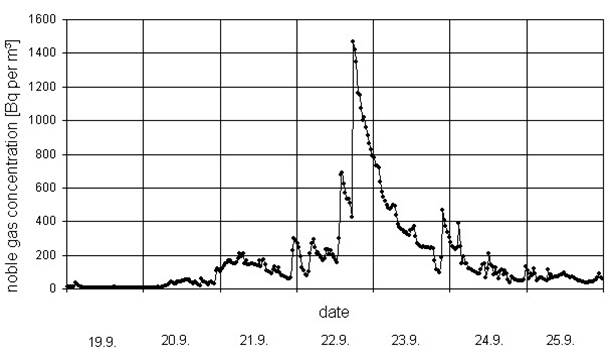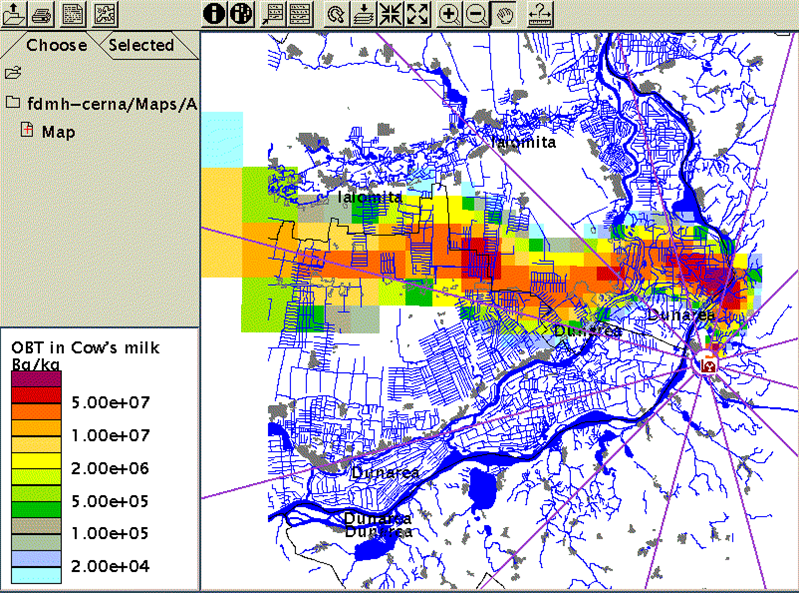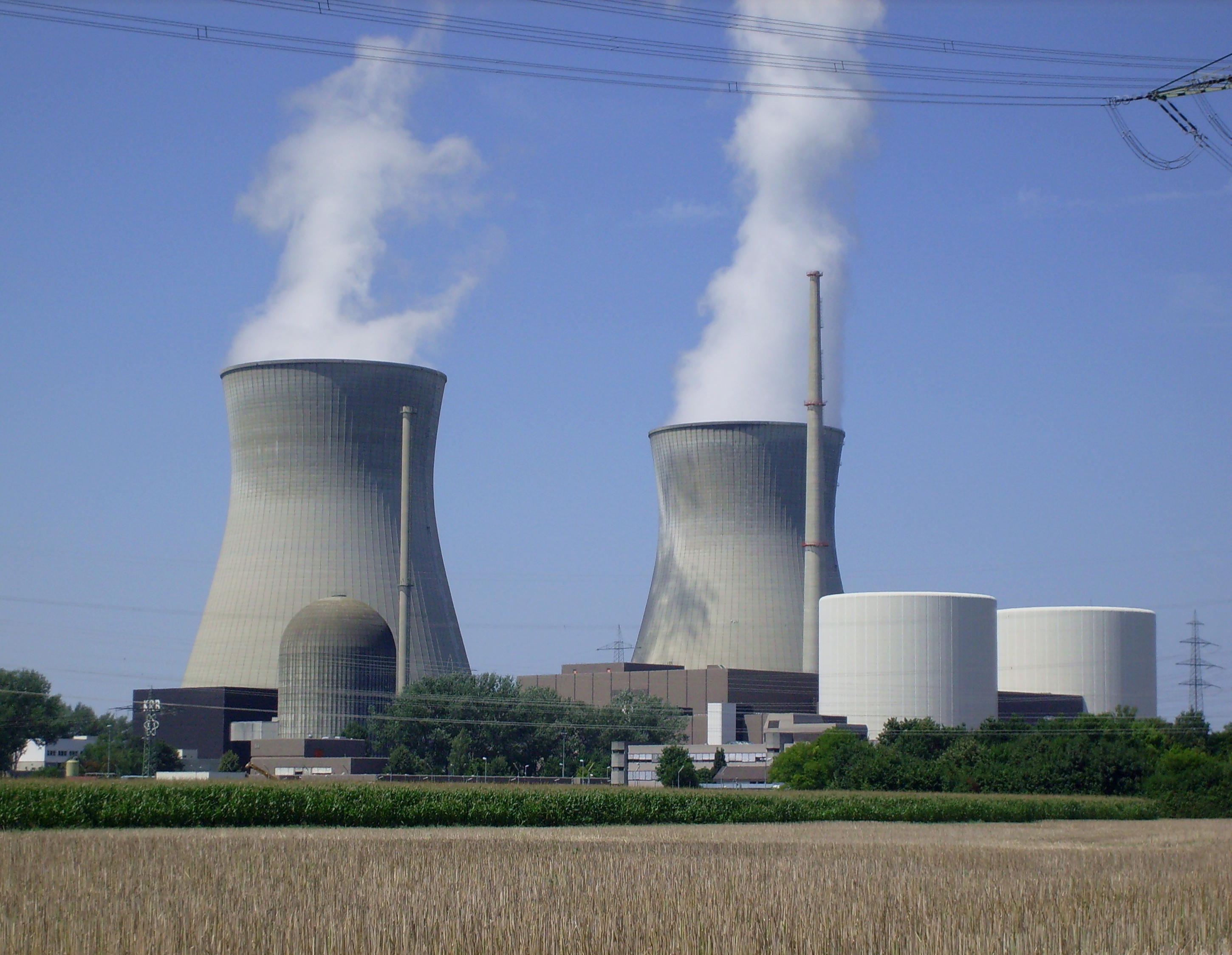
Last July, we published a piece on recent groundbreaking work from the U.K.’s Dr. Ian Fairlie and the connection between radiation releases from nuclear reactors and childhood leukemia.
We quoted Dr. Fairlie:
“The core issue is that, world-wide, over 60 epidemiological studies have examined cancer incidences in children near nuclear power plants (NPPs): most (>70%) indicate leukemia increases. I can think of no other area of toxicology (eg asbestos, lead, smoking) with so many studies, and with such clear associations as those between NPPs and child leukemias. Yet many nuclear governments and the nuclear industry refute these findings and continue to resist their implications. It’s similar to the situations with cigarette smoking in the 1960s and with man-made global warming nowadays.”
Today, Ian (full disclosure: an old friend and valued colleague) stopped by NIRS’ office to go over a presentation he made Monday to officials at the U.S. Environmental Protection Agency. The presentation is available in both Powerpoint and pdf format on NIRS’ website.
The presentation went over much the same ground as our earlier piece, but it’s often the background behind such a presentation that is the most interesting and revealing. And that’s the case here too.
Dr. Fairlie’s thesis is that childhood leukemia is caused by radiation exposure. Period. The data from several fairly recent European governmental studies show elevated childhood leukemia rates within five kilometers (three miles) of nuclear reactors. Past five kilometers, the elevated rates drop off to normal rates.
This, by the way, may be an indication that most U.S. studies of health effects of reactors have taken place over too large of an area–thus diluting the actual effects that could be expected to be found based on the European studies–at least for childhood leukemia. And, typically U.S. studies have been essentially on a circle around a reactor, rather than confined to areas subject to prevailing wind patterns where the largest exposures would occur as was the case with the European studies.
Dr. Fairlie believes, and shows, that the refueling of nuclear reactors results in large spikes in radiation releases–spikes that when averaged out over a year, as radiation release reporting typically is done, bury the truth.
And that makes sense. When a reactor is refueled, the top of the reactor pressure vessel is lifted off so that operators can take out old fuel rods and put in new ones. When that top comes off, the radiation comes out. Especially tritium, which is released with the steam that rises from the vessel. It’s also released into water–and the tritium and the water become inseparable. Ingest that water, and you’re also ingesting tritium.

Cows eat vegetation upon which airborne tritium has deposited. They may drink tritium-laced water too. The chart to the right (click to expand) shows expected tritium levels in cow’s milk caused by releases from refueling at Romania’s Cernavoda reactors. Children then drink the cow’s milk, which itself has become radioactive. Fairlie believes that childhood leukemia begins in utero, by exposure during a woman’s pregnancy, and is triggered by additional exposure after birth.
A key point Dr. Fairlie made to us is that this work was only possible because of release of data previously withheld by the nuclear industry and its regulators worldwide. And, in fact, for every reactor in the world save one, that data continues to be withheld.
The exception, which is captured by the chart at the top of the page, is the Gundremmingen reactors in Bavaria, Germany. That chart shows an actual radiation spike during refueling of one of those reactors.
That data was obtained only because a few years back, the German Green Party and Social Democrats together won an election and governed Bavaria. As Fairlie tells it, an official from that government–the head of the department that regulates nuclear power in the region–brought in an official from the nuclear power plant and demanded the operator provide information on daily radiation releases from the site.

The reactor official refused. The government official demanded it. The reactor official refused, saying it wouldn’t be understood. The government official demanded it. The reactor official said it would take months to compile. The government official told the reactor guy to submit his undated letter of resignation, which he did. The official then told the reactor guy that if the information wasn’t provided within three days, the letter would be dated and made public.
The information arrived in three days–but could only be read by a proprietary computer program held by the utility. But some young Green Party computer geeks succeeded in moving the data through three separate programs and eventually were able to put it into Excel format. And the truth came out.
That’s the kind of data that is certainly worth demanding everywhere. It takes political pressure to get it–the nuclear industry will never release it of its own volition. Because, like the radioactive materials released by nuclear reactors, especially during refueling, it is toxic. Toxic to the lie that radiation emissions from nuclear reactors are harmless, and toxic to the lie that tritium is a low-energy isotope that is not particularly hazardous.
In his presentation, Fairlie lists a number of studies on tritium’s toxicity. On NIRS’ website, we have provided links to 16 scientific abstracts on the issue. On our main tritium page, there is also more information about tritium and its properties, and links to various other studies and reports about tritium releases–which have occurred to groundwater at a majority of U.S. reactor sites.
Fairlie provides three very simple, no-cost steps the nuclear industry could take to reduce the risks of refueling: “advise NPPs to refuel at night-time, or during windy weather, or when wind is blowing away from high populations.” They won’t do that of course, because even taking those steps would be an admission of the dangers the reactors pose.
A better step would be to require a zero-population zone three miles around every reactor. A still-better step–and the one we work for everyday–is to close them all entirely. Because nuclear power kills. And the evidence grows stronger every day.
Dr. Fairlie’s presentation ended with one of my favorite quotes as well, from then-Senator John F. Kennedy:
It is true that the amount of radiation created by bomb tests so far offers no serious threat to the well-being or existence of mankind as a whole. But it is also true that there is no amount of radiation so small that it has no ill effects at all on anybody. There is actually no such thing as a minimum permissible dose. Perhaps we are talking about only a very small number of individual tragedies–the number of atomic age children with cancer, the new victims of leukemia, the damage to skin tissues here and reproductive systems there–perhaps these are too small to measure with statistics. But they nevertheless loom very large indeed in human and moral terms.
Radiation, in its simplest terms–figuratively, literally and chemically–is poison.
There weren’t many reactors operating in 1960; Kennedy was referring to above-ground nuclear weapons tests. But the effects of radiation are no longer limited to those, they are also caused by the 99 reactors licensed now in the U.S. and the 400+ operating globally. In many realms, we’ve come a long way since Sen. Kennedy spoke those words in 1960, not long before he became President. But in our collective understanding of the dangers of radiation, and thus the dangers not only of Fukushima-style meltdowns but the regular, routine, ongoing operations of atomic reactors, it doesn’t seem like we’ve come very far at all. The nuclear power industry has been expert and relentless at obfuscating the truth; it’s the all-too-few dedicated researchers like Dr. Fairlie who are striving, against tall odds, to expose the reality. It’s up to the rest of us to disseminate the information as widely as possible.
Michael Mariotte
April 29, 2015
Permalink: https://www.nirs.org/2015/04/29/the-evidence/
Your contributions make publication of GreenWorld possible. If you value GreenWorld, please make a tax-deductible donation here and ensure our continued publication. We gratefully appreciate every donation of any size.
Comments are welcome on all GreenWorld posts! Say your piece. Start a discussion. Don’t be shy; this blog is for you.
If you’d like to receive GreenWorld via e-mail, send your name and e-mail address to nirs@nirs.org and we’ll send you an invitation. Note that the invitation will come from a GreenWorld@wordpress.com address and not a nirs.org address, so watch for it. Or just put your e-mail address into the box in the right-hand column.
If you like GreenWorld, help us reach more people. Just use the icons below to “like” our posts and to share them on the various social networking sites you use. And if you don’t like GreenWorld, please let us know that too. Send an e-mail with your comments/complaints/compliments to nirs@nirs.org. Thank you!
GreenWorld is crossposted on tumblr at https://www.tumblr.com/blog/nirsnet




Michael, it is unlikely the tritium from Cernavoda comes from refuelling spikes. These are CANDU reactors that fuel constantly. There are maintenance outings, but no refuelling outings. Besides that, CANDUs are moderated by heavy water, which also makes them tritium emission heavy. Cernavoda town no doubt gets too much of the stuff.
Sorry, perhaps we weren’t clear. The chart is a hypothetical release of tritium, not an actual release. It is our understanding that this chart depicts a tritium release that would be expected from refueling from just about any reactor, not necessarily Cernavoda. And these would be the expected levels of tritium in cow’s milk from a release this size. Yes, Cernavoda is a CANDU and releases in reality far more tritium routinely than the far more prevalent PWRs and BWRS. Which is probably why it was chosen for a study on tritium releases that produced this graph. To the best of our knowledge, there has never been a similar graph produced for an actual refueling release from any reactor. Note that in Canada, however, we’re told that CANDUs typically are shut down for refueling outages. I hope this clarifies things.
Awesome & timely, both. Thank you!!
JFK’s speech announcing the limited nuclear test ban was even better, I have it archived at
http://www.jfkmoon.org/test-ban.html
July 26, 1963
also:
“our most basic common link is that we all inhabit this small planet. We all breathe the same air. We all cherish our children’s future. And we are all mortal.”
— President John F. Kennedy, commencement speech at American University, Washington, D.C., June 10, 1963, calling off the Cold War, a speech that got more media coverage in the Soviet Union than the United States
http://www.jfkmoon.org/american-university.html
and his speech to the UN calling off the Cold War and the Space Race:
http://www.jfkmoon.org/un.html
Finally, in a field where the United States and the Soviet Union have a special capacity–in the field of space–there is room for new cooperation, for further joint efforts in the regulation and exploration of space. I include among these possibilities a joint expedition to the moon. Space offers no problems of sovereignty; by resolution of this Assembly, the members of the United Nations have foresworn any claim to territorial rights in outer space or on celestial bodies, and declared that international law and the United Nations Charter will apply. Why, therefore, should man’s first flight to the moon be a matter of national competition? Why should the United States and the Soviet Union, in preparing for such expeditions, become involved in immense duplications of research, construction, and expenditure? Surely we should explore whether the scientists and astronauts of our two countries–indeed of all the world–cannot work together in the conquest of space, sending someday in this decade to the moon not the representatives of a single nation, but the representatives of all of our countries. ….
The effort to improve the conditions of man, however, is not a task for the few. It is the task of all nations–acting alone, acting in groups, acting in the United Nations, for plague and pestilence, and plunder and pollution, the hazards of nature, and the hunger of children are the foes of every nation. The earth, the sea, and the air are the concern of every nation. And science, technology, and education can be the ally of every nation.
Never before has man had such capacity to control his own environment, to end thirst and hunger, to conquer poverty and disease, to banish illiteracy and massive human misery. We have the power to make this the best generation of mankind in the history of the world–or to make it the last. ….
But peace does not rest in charters and covenants alone. It lies in the hearts and minds of all people. And if it is cast out there, then no act, no pact, no treaty, no organization can hope to preserve it without the support and the wholehearted commitment of all people. So let us not rest all our hopes on parchment and on paper; let us strive to build peace, a desire for peace, a willingness to work for peace, in the hearts and minds of all our people. I believe that we can. I believe the problems of human destiny are not beyond the reach of human beings.
Two years ago I told this body that the United States had proposed, and was willing to sign, a limited test ban treaty. Today that treaty has been signed. It will not put an end to war. It will not remove basic conflicts. It will not secure freedom for all. But it can be a lever, and Archimedes, in explaining the principles of the lever, was said to have declared to his friends: “Give me a place where I can stand–and I shall move the world.”
My fellow inhabitants of this planet: Let us take our stand here in this Assembly of nations. And let us see if we, in our own time, can move the world to a just and lasting peace.
— President John F. Kennedy, September 20, 1963 speech to the UN calling for an end to the Cold War and converting the Moon Race into an international cooperative effort, two months and two days before he was removed from office.
It’s a fine quote and a nice reminder that we have, in fact, had Presidents that understood basic issues. But the quote Dr. Fairlie and we used is the only time I have ever seen a U.S. President (or, for that matter a Senator) express such an understanding of the dangers of radiation.
Keep the information coming we will use it to be advantage. Thank you!
Reblogged this on nuclear-news.
Reblogged this on San Onofre Safety.
Not to correct you, but I believe the total of operating reactors worldwide may be less than 400 now.
1. 99 in US 5 down from 104 max.
2. No Japanese atomic reactors are operating thus 49 should be subtracted from the World Nuclear Association updated 1/1/15 total of 435 total operating.
386 operating worldwide reactors is something for us to celebrate in my view
Thank you NIrs and Michael, Tim, Chris and all..
gfv
That’s probably correct at the moment, although most of the Japanese reactors have not been officially retired and there is, of course, a major effort underway to restart many of them. Thus, they continue to show up on lists of operating reactors.
I am researching the UK badger cull and found a nuclear pollution link. This means that nuclear pollution is costing the UK government, public money, £100m a year for the next 23 years to basically slaughter reactor cows and badgers. They blame this on ‘infectious’ disease but this is nonsense. It is reactor cows caused by nuclear pollution post Chernobyl. These things don’t make the national press, there is a taboo or a silence. No one can face this nuclear issue, it is forbidden. We mass slaughter but what we should be doing is getting rid of nuclear totally. My old article here…. John Wantling, Rochdale, UK Badger Cull – TB not Infectious
http://www.whale.to/c/tb_not_infectious.htm%27.htm
John, thanks for this clear exposition on media and governments’ silence on the dangers of NPP contamination.
Add to this on UK , effects of the WIPP explosion and releases of rad gasses in New Mexico: http://enenews.com/govt-actual-radioactive-release-nuke-dump-orders-magnitude-predicted-370-billion-bq-plutonium-equivalent-escaped-wipp-drum-significant-number-nuclear-waste-containers-expected-be-breached-amount .
Probably not only one drum but several were partly destroyed. The entire inside of the WIPP is now contaminated as are the filters. Have they changed filters to the outside air yet? Or is that impossible after the accident?
TV media: silence or briefly noted. Print media: only local newspapers in areas where the air plume spread continue to report on this. EneNews keeps track.
Reblogged this on Vernon Radiation Safety and commented:
How refueling of nuclear power plants contributes to childhood leukemia.